|
Meet the Bukwas: |
|||
|
“When we arrived at the mouth of the Kattlepoutal River, twenty-six miles from Vancouver (Washington), I stopped to make a sketch of the volcano, Mt. St. Helens, distant, I suppose, about thirty to forty miles. This mountain has never been visited by either whites or Indians; the latter assert that it is inhabited by a race of beings of a different species, who are cannibals, and whom they hold in great dread . . .” Paul Kane, frontier artist, March 26, 1847. -- Paul Kane, right, from the frontispiece of the 1925 edition of his book Wanderings of an Artist. “Although I have never personally encountered a Sasquatch, there is ample proof that hairy giants formerly inhabited the Chehalis district in considerable numbers. Its ancient name— ‘The Place of the Wild Men’— was until recently accepted as an echo of primitive superstitions, but the accidental discovery a few years ago of two crude cave dwellings confirmed the Indian legend that the later Troglodytic period of this region was the abode of human beings of huge stature.” J.W. Burns, Indian agent, Chehalis District, British Columbia, 1940. ” . . .The Indians are now very sensitive to any imputations cast upon their veracity in this matter. During the 19th century they were ready to tell enquirers all they knew about the Susquatch [sic] men; but today they have become more reserved, and talk only to government agents about the matter. They maintain that the ‘Wild Indians’ are divided into two tribes, whose rivalry with each other keeps the number down and so prevents them becoming a serious menace to others. . .” C.S. Lambert, 1954 (deferring to Alan Roy Evans, Montreal Standard). Do these men (and many others) speak of the same “wild man”? We know the accounts of the Salish Indians of the Chehalis (British Columbia) the best because here J.W. Burns was their Indian agent. He was so taken by their stories that he is the man who introduced us to the Indian histories of “Sasquatch,” a name he condensed from Saskahaua George (pronounced with the heavy Salish accent as Saskahaua Chotch). The Saskahaua was the Chehalis’ ancient name (also pronounced Saskakaua). Within this huge, primal area of British Columbia there lived two types of “wild Indians,” similar enough to be considered roughly the same thing but different enough for the Salish to draw distinctions. J.W. Burns was also faithful enough to preserve for us accurately that both tribes were the size of men. They are about 6 to 6 and a half feet tall but twice the thickness of an ordinary man. To the shorter Indian peoples these were giants. Because the word “giant” was so often used, White Man later distorted the stories into the legend of 8 to 10 foot tall giant hairy Indians. Then, later, these same stories were used to support the theory of a giant Gigantopithecus ape. But the truth had always been something hairy all over and very manlike. These are the 2 tribes. But what are they? Is one an ape-like human Many tribes have preserved the reality of the bukwas -- the wild man of the woods-- in tribal dance masks. But their artwork doesn’t help answer the question. It only confirms the conundrum. Bukwas is portrayed in art as two different things– human and ape-like. It appears two different entities were truly that suggestive of each other to be called wild man. There is another problem. How to reconcile the masks with all the various stories of “wild men” throughout the Pacific Northwest? There is no known artwork of the dreaded Skoocoom of Mount St. Helens. Indeed, Paul Kane couldn’t really understand what the Klickitat and Chinook meant. The result was the superlative redundancy “race of beings of a different species.” Whatever they were, they were so human-like that the local Indians regarded them as cannibals for having half eaten a trapper. When Whites began to visit Mount St. Helens in greater number they came back with stories of the “Mountain Devil.” These encounters eventually led to the legend of the “gorillas of Mount St. Helens.” A fascinating label, is it not? It is hard to say when it was first used, but obviously it could only have been used after the discovery of Bukwas, right, a savage appearing “human monster” or wild man. Is a gorilla-like ape what the Indians were speaking of when they said “Skoocoom”? A man eating ape? It would have to be an anthropoid quite different from Old World apes. One thing is certain: the Skoocum were so dreaded that no Indian would step foot on the mountain shoulders. They were so dreaded, in fact, there is no identifiable artwork of them. They were human-like to the Indians but not human; they were gorilla like to White Man but not gorillas. When examining all the various bukwas masks there is, actually, quite a difference between them. They can be divided into human-like “wild men” and a human-like monster. The one, consistent difference between them? The human-like “wild man” is never shown snarling. A number of Salish braves who had had contact with the “wild Indians” insisted that one tribe could speak something akin to Douglas, which clearly means one was human. Brave Charley Victor insisted they were human, though quite different. Of his encounter with a Sasquatch klootchman (female) he said: “The hairy creature, for that is what it was, walked toward me without the slightest fear. The wild person was a woman. Her face was almost negro Of the many examples of the bukwas preserved in tribal masks, the same Salish people are responsible for having carved the most human-like. This most outstanding example was made about 100 years ago. It is preserved in Washington DC in the National Museum of the American Indian. The features are not Indian or White. They are negroid to an extent and the symbolic trappings are there to indicate the “wild man” — disheveled hair, rough, unkempt appearance, thick lips, sallow complexion. The mouth does not have the grimace and snarling teeth because the human bukwas was used by the shaman, and the mouth needed to be jointed (or open) in order for the shaman to utter his Is this the “Sasquatch man,” one of the tribes of wild humans the Salish insisted lived deep in the Saskahaua? This isn’t the article “Meet The Sasquatch Man,” so we don’t want to deal with it here, but I would say it would be a good guess. The difficult part is to try and sort out how many of the other “wild men” reported throughout the Pacific Northwest are this same type of people, or if they are people at all. None of the human-like bukwas masks represent something fierce. Yet stories persist about dreaded human-like “wild men.” There are the stories of the Seahtiks and other tribes who lived in conclaves along the Cascades and were not said to be so peaceable. The Skoocoom of Mount St. Helens are a case in point. It must be noted, of course, that the Skoocoom (Skoocum) were dreaded beyond belief. They were also considered cannibals for eating a human. The Kangaroo Man inspired fear in those who had encountered him. But the more ape-like the mask, the more it is presented as snarling, symbolically indicating its fierceness. And some masks were so finely Are the Saskahaua stories the truth for the entire Pacific Northwest? Along the Cascades are/were there remnants of actual, very primitive looking people in mountain conclaves and also species of a very unusual anthropoid? The question may be too narrow. We may be dealing with more than two. It is Bigfooters who took every exotic piece of Indian artwork and edited it to represent Bigfoot/Sasquatch the giant Gigantopithecus. In truth, the peoples of the Pacific Northwest spoke of a number of entities under various names. One of the most significant is the Dsonoqua. Artistic representations are declared by Bigfooters to represent Bigfoot. Dsonoqua is not. It is, however, a large piece of the puzzle. And it may also be the key to understanding and finally revealing the origin of one of the tribes for which we seek. Let’s meet the Dsonoqua.
|
|||
|
Q Files is not spontaneous extemporanea. |
||||||||||||
|
|
||||||||||||
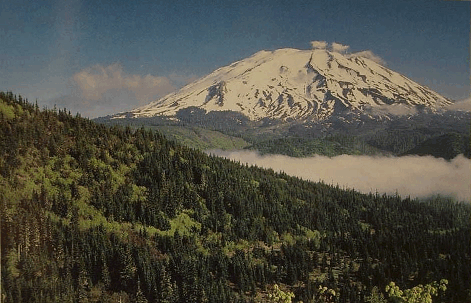
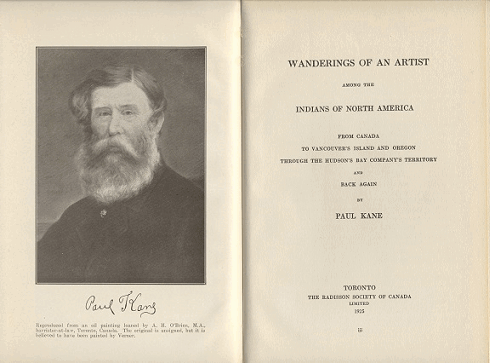
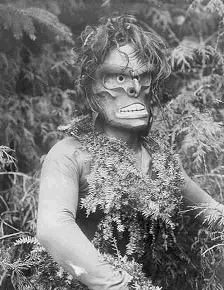 and the other a humanoid anthropoid? Or are they two separate species of undiscovered anthropoids who are inimical to each other?
and the other a humanoid anthropoid? Or are they two separate species of undiscovered anthropoids who are inimical to each other?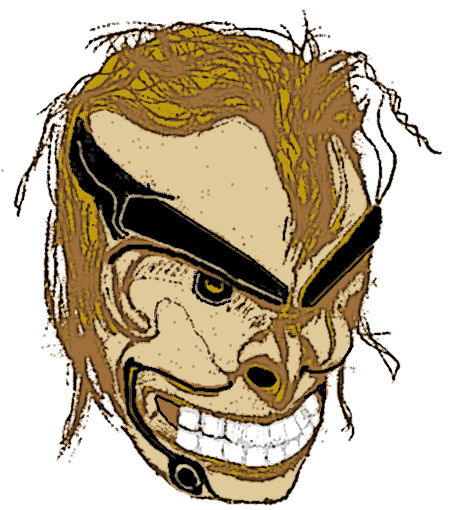 the gorilla in Africa (mid 19th century) and then after its illustrations were widely circulated in America.
the gorilla in Africa (mid 19th century) and then after its illustrations were widely circulated in America. 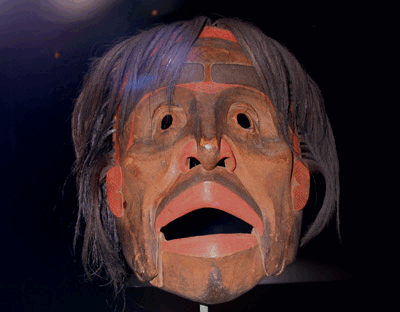 black and her long straight hair fell to her waist. In height she would be about six feet, but her chest and shoulders were well above the average in breadth.”
black and her long straight hair fell to her waist. In height she would be about six feet, but her chest and shoulders were well above the average in breadth.”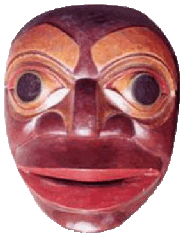 oracles. Once again, these human bukwas type of masks do not have the snarling grimace. They may be fierce people, but they are not shown that way.
oracles. Once again, these human bukwas type of masks do not have the snarling grimace. They may be fierce people, but they are not shown that way. 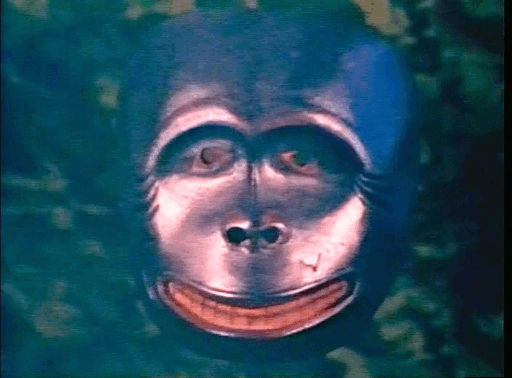 made there is no doubt that something very ape-like was known to the people of the Pacific Northwest and considered a violent “wild man.” The Tsimishian Mask is the most notable example of such a mask.
made there is no doubt that something very ape-like was known to the people of the Pacific Northwest and considered a violent “wild man.” The Tsimishian Mask is the most notable example of such a mask.